Fishes
Media
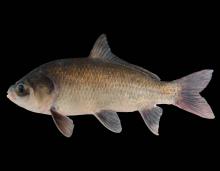
Species Types
Scientific Name
Ictiobus cyprinellus
Description
Missouri's largest sucker, the bigmouth buffalo occurs over much of the state and is most abundant in the Missouri River and its larger tributaries to the north.
Media

Species Types
Scientific Name
Cyprinus carpio
Description
The common carp is a "whopper" member of the minnow family. Originally from Asia, it was actively stocked in America in the 1800s and was firmly established in Missouri by 1895.
Media
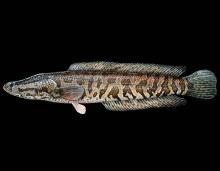
Species Types
Scientific Name
Channa argus and other Channa and Parachanna spp.
Description
Snakeheads are native to Asia and invasive in America. They resemble bowfins and can live in similar habitats. Note the extended anal fin and the pelvic fins located close to the pectoral fins and gills.
Media
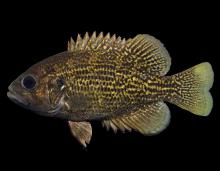
Species Types
Scientific Name
Ambloplites rupestris
Description
The northern rock bass, or goggle-eye, is thicker than most other sunfish, with a large mouth and very large eyes. It occurs in northern Ozark streams, tributaries of the middle Mississippi, and a portion of the southwestern Ozarks; sometimes in Ozark reservoirs.
Media
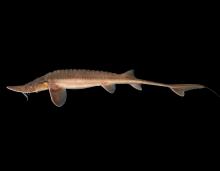
Species Types
Scientific Name
Scaphirhynchus platorynchus
Description
The shovelnose sturgeon's snout is flattened and shovel-shaped; the barbels are fringed, and the bases of the barbels are positioned to form a straight line.
Media
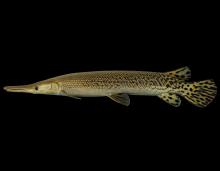
Species Types
Scientific Name
Atractosteus spatula (formerly Lepisosteus spatula)
Description
The alligator gar is Missouri's largest gar and has a distinctively short, broad snout. Populations are declining. This fish once occurred in the Mississippi River at least as far upstream as the mouth of the Illinois River and in major tributaries.
Media
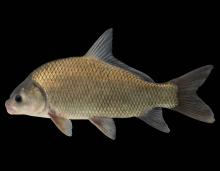
Species Types
Scientific Name
Ictiobus bulbalus
Description
The smallmouth buffalo is nearly as common and widespread in Missouri as the bigmouth buffalo. Identify it by its small, nearly horizontal mouth and the strongly keeled forward part of its back.
Media
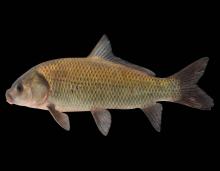
Species Types
Scientific Name
Ictiobus niger
Description
Compared to Missouri’s other buffalofishes, the black buffalo is less abundant and widespread, and of the three, it occurs most often in places with strong currents.
Media
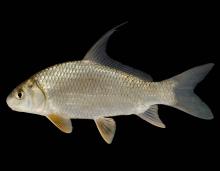
Species Types
Scientific Name
Carpiodes cyprinus
Description
Like our other carpsuckers, the quillback has a deep, rather thick body and a long, sickle-shaped dorsal fin. This silvery, hump-backed fish is widely distributed in Missouri.
Media
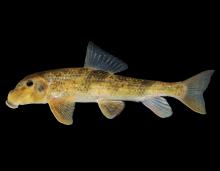
Species Types
Scientific Name
Hypentelium nigricans
Description
The northern hog sucker is one of the most abundant and widely distributed stream fishes in the Ozarks. It has a large, bony, square head. The mouth is at the tip of snout on the bottom. There are usually four dark crossbars.
See Also


Media

Species Types
Scientific Name
Amphiuma tridactylum
Description
The three-toed amphiuma is an eel-like, completely aquatic salamander. It has very small forelimbs and hind limbs, each with three tiny toes. In Missouri it’s found only in the Bootheel region.
Media

Species Types
Scientific Name
Siren intermedia nettingi
Description
The western lesser siren is an eel-like, aquatic salamander with external gills, small eyes, small forelimbs with four toes, and no hind limbs. In Missouri, it’s found mostly in the Bootheel and northward in counties near the Mississippi River.
About Fishes in Missouri
Missouri has more than 200 kinds of fish, more than are found in most neighboring states. Fishes live in water, breathe with gills, and have fins instead of legs. Most are covered with scales. Most fish in Missouri “look” like fish and could never be confused with anything else. True, lampreys and eels have snakelike bodies — but they also have fins and smooth, slimy skin, which snakes do not.





















